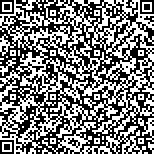| 摘要: |
| 对1998年4月15日采集于广东珠江口万山群岛桂山岛网箱养殖区的赤潮活体水样和福尔马林固定样品进行优势种的形态分类和生物学特征的研究。结果发现,三宅裸甲藻(Gymnodinium mikimotoi)是此次赤潮的最优势种,最高密度达到7.6×106 cells/L。另两种优势种为斯氏多沟藻(Polykrikos schwartzii)和螺旋螺沟藻(Gyrodinium spirale),其最高密度分别达到1.1×105 cells/L和104–105 cells/L。此次赤潮的原因生物都属于裸甲藻类,死后或用福尔马林固定后细胞要么立即裂解,要么变形缩小。有些种类如螺旋螺沟藻在固定样品中找不到其踪迹,因而无法精确计数。本文描述的3种赤潮藻在细胞、色素体、核、上锥沟和链状群体等形态构造及外观上与国外学者所描述的几乎完全一致,只是细胞比日本海域产的稍小。 这可能与珠江口海域纬度较日本低有关。电镜照片显示三宅裸甲藻有一明显的上锥沟,斯氏多沟藻则营养细胞和孢囊同时存在。 |
| 关键词: 甲藻 裸甲藻 赤潮 分类 珠江口 |
| DOI:10.11693/hyhz200002012012 |
| 分类号: |
| 基金项目:国家自然科学基金九五重大项目,39790110号 |
附件 |
|
| TAXONOMIC AND BIOLOGICAL STUDIES ON CAUSATIVE ORGANISMS FROM A LARGE SCALE RED TIDE OCCURRENCE IN ZHUJIANG RIVER ESTUARY IN THE SPRING, 1998 I |
|
HUANG Chang-jiang, DONG Qiao-xiang
|
|
Marine Biology Laboratory of Science Centre, Shantou University, Shantou, 515063
|
| Abstract: |
| A large scale harmful algal bloom occurred in the Zhujiang River estuary on the South China Sea Coast from March to April in 1998, and caused a great economic loss on the local fish farming. With optical microscope and scanning electron microscope, we studied morphological features of the causative organisms sampled from the most hit area—a tanked fish farm near Guishan Island located on the west side of the Zhujiang River estuary, China, on April 15th 1998 when the bloom was on its peak. At the same time, counting on the populations was made for the species that could be judged in the samples preserved by formalin. The most dominant causative organism of the bloom (7.6×106 cells/L) was identified to be Gymnodinium mikimotoi Miyake et Kominami ex Oda. Two other dominant species Polykrikos schwartzii Bütschli (1.1×105 cells/L and Gyrodinium spirale Bergh (104–105 cells/L) are also discussed in the present paper, and another four red tide causative organisms will be discussed in the following paper.
Gym. mikimotoi with a cell length 15.6–31.2μm and width 13.2–24μm. The cells slightly were flattened dorso-ventrally. The epicone looks sub-hemispherical to broadly conical with an apical groove extending from the right of cingulum to the ventral. The nucleus is ellipsoidal to reniform, and there were 10–16 chloroplates scattered in the cells. P. schwartzii was always coonial, consisting of four to eight gymnodinioid units with one nucleus per two units. The colony was 80–130μm in length and 40–55μm in width, but each unit shortly columnar with girdle and sulcus, lacking pigments. Its cysts were also found in the samples, ellipsoidal and dark brown in color and covered with coaserly reticulate, shelf-like and / or spinous ornaments. Gyr. Spirale looked spindle in shape, with a 55–80μm in length and a 22-32μm in width. Girdle was marrow and displaced in more than 1/3 of cell length. There were clear straps extending from epicone to hypocone. No photosynthetic pigments were found. When the cell movement stopped, the organism died and collapsed almost at once.
All these red tide organisms belong to unarmored dinoflagellate, and after they died or were preserved by formalin, they would collapse or transform. So, some species such an Gyr. Spirale could not be counted precisely in the preserved samples. The morphological structures like appearance, chloroplast, nucleus, apical groove, cyst, colony and so on for these three species discussed in the present paper were much similar to those found in other countries. However, the size of organisms was slightly smaller than that distributed in the Japanese waters, probably because the latitude of the Zhujiang River estuary is lower than that in Japan. Although the density of organisms was not so high and the duration was just two days, the bloom made a severe loss on the local fish farming. This indicated that the unarmored dinoflagellate bloom was very harmful to marine ecological system and fish farming. |
| Key words: Dinoflagellate, Unarmored dinoflagellate, Red tide, Taxonomy, Zhujiang River estuary |
